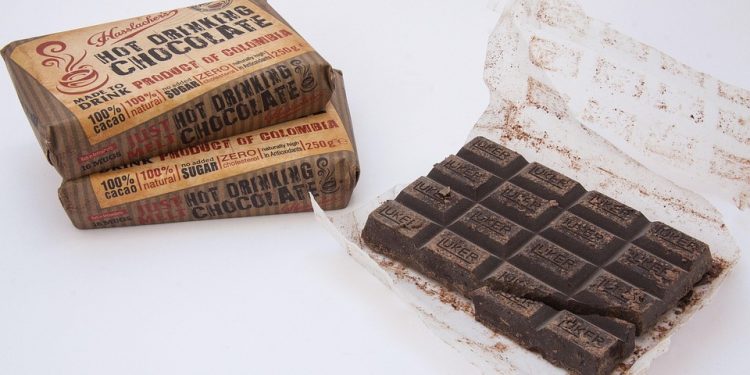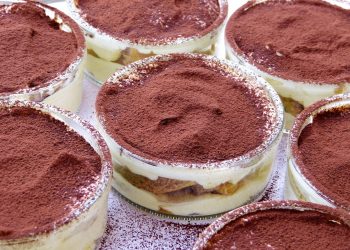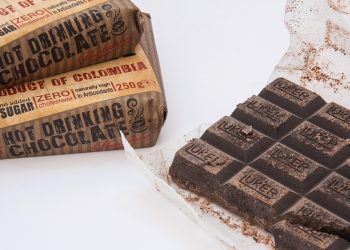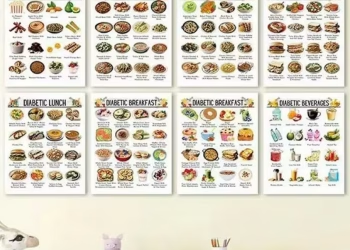Sugar-Free Meal Prep: Save Time & Eat Well
In today’s fast-paced world, maintaining a healthy diet can feel like an uphill battle. Temptations lurk around every corner, and processed foods, often laden with hidden sugars, are readily available. But what if you could take control of your nutrition, save valuable time, and enjoy delicious, sugar-free meals throughout the week? Enter the world of sugar-free meal prep!
This comprehensive guide will equip you with the knowledge and tools you need to successfully embark on your sugar-free meal prep journey. We’ll explore the benefits, provide practical tips, offer recipe ideas, and address common concerns. Let’s dive in!
Why Choose Sugar-Free Meal Prep?
The benefits of reducing your sugar intake are numerous and well-documented. Here’s why incorporating sugar-free meal prep into your lifestyle can be a game-changer:
- Improved Energy Levels: Say goodbye to energy crashes! Stable blood sugar levels lead to consistent energy throughout the day.
- Weight Management: Excess sugar contributes to weight gain. Cutting it out can support your weight loss or maintenance goals.
- Reduced Risk of Chronic Diseases: A sugar-free diet can lower your risk of type 2 diabetes, heart disease, and certain cancers.
- Enhanced Mental Clarity: Brain fog often clears when you reduce sugar intake, leading to improved focus and concentration.
- Better Mood: Sugar highs and lows can wreak havoc on your mood. Stabilize your blood sugar for a more balanced emotional state.
- Save Time & Money: Planning and prepping your meals in advance prevents impulsive, unhealthy takeout choices, saving you both time and money.
Getting Started: Planning Your Sugar-Free Meal Prep
Effective meal prep starts with careful planning. Here’s a step-by-step approach to ensure your success:
1. Define Your Goals
What are you hoping to achieve with sugar-free meal prep? Are you looking to lose weight, improve your energy levels, manage a specific health condition, or simply eat healthier? Clearly defining your goals will help you stay motivated and track your progress.
2. Choose Your Recipes
Select recipes that are naturally low in sugar or easily adaptable to be sugar-free. Focus on whole, unprocessed foods like lean proteins, vegetables, healthy fats, and complex carbohydrates.
Examples of Sugar-Free Meal Prep Options:
- Breakfast: Overnight oats with unsweetened almond milk, berries, and chia seeds; Scrambled eggs with spinach and avocado; Greek yogurt with nuts and seeds.
- Lunch: Salad with grilled chicken or fish and a vinaigrette dressing; Leftovers from dinner; Vegetable soup with whole-grain bread.
- Dinner: Baked salmon with roasted vegetables; Chicken stir-fry with brown rice (using a sugar-free sauce); Lentil soup.
- Snacks: Hard-boiled eggs; Nuts and seeds; Celery sticks with almond butter; Berries; Unsweetened Greek yogurt.
3. Create a Shopping List
Once you’ve chosen your recipes, create a detailed shopping list to ensure you have all the necessary ingredients. Check your pantry and refrigerator to avoid buying duplicates.
4. Designate Prep Time
Set aside a specific time each week for meal prepping. Sundays are often a popular choice, but choose a day that works best for your schedule. Aim for 2-3 hours to prepare several meals and snacks for the week.
5. Invest in the Right Containers
Having appropriate containers is crucial for storing and transporting your meals. Opt for BPA-free, airtight containers in various sizes.
Tips for Successful Sugar-Free Meal Prep
Here are some tips to streamline your meal prep process and ensure your success:
- Focus on Batch Cooking: Prepare large quantities of key ingredients like grains, proteins, and vegetables. This saves time and provides a foundation for multiple meals.
- Prep Components, Not Just Meals: Instead of preparing entire meals, you can prep individual components like cooked chicken, chopped vegetables, and pre-portioned grains. This allows for flexibility and variety throughout the week.
- Utilize Your Freezer: Freeze extra portions of meals or individual ingredients for future use. Soups, stews, and cooked meats freeze particularly well.
- Season Strategically: Use herbs, spices, and lemon juice to add flavor to your meals without relying on sugar. Experiment with different flavor combinations to keep things interesting.
- Hydrate with Sugar-Free Beverages: Swap sugary drinks for water, unsweetened tea, or sparkling water with a squeeze of lemon or lime.
- Read Labels Carefully: Become a label-reading expert to identify hidden sugars in processed foods. Be aware of terms like high fructose corn syrup, sucrose, glucose, and maltose.
- Don’t Be Afraid to Experiment: Meal prep should be enjoyable! Try new recipes and adapt existing ones to your liking.
- Start Small: If you’re new to meal prep, start with just a few meals or snacks each week and gradually increase the amount as you become more comfortable.
Adapting Recipes for a Sugar-Free Diet
Many recipes can be easily adapted to be sugar-free with a few simple substitutions:
- Replace Sugar in Baking: Use natural sweeteners like stevia, erythritol, or monk fruit in place of refined sugar. Adjust the amount according to the sweetener’s potency.
- Make Your Own Sauces and Dressings: Store-bought sauces and dressings often contain added sugar. Making your own allows you to control the ingredients and eliminate unnecessary sugar.
- Choose Unsweetened Versions: Opt for unsweetened versions of products like yogurt, almond milk, and applesauce.
- Use Fruit Judiciously: While fruit is a healthy source of nutrients, it also contains natural sugars. Consume fruit in moderation and pair it with protein or healthy fats to slow down sugar absorption.
- Be Mindful of Condiments: Condiments like ketchup and barbecue sauce can be surprisingly high in sugar. Look for sugar-free alternatives or make your own.
Sugar-Free Recipe Ideas to Get You Started
Here are a few delicious and easy sugar-free meal prep recipes to get you inspired:
1. Lemon Herb Chicken with Roasted Vegetables
Ingredients:
- Chicken breasts
- Assorted vegetables (broccoli, bell peppers, zucchini, onions)
- Olive oil
- Lemon juice
- Dried herbs (oregano, thyme, rosemary)
- Salt and pepper
Instructions:
- Preheat oven to 400°F (200°C).
- Cut vegetables into bite-sized pieces and toss with olive oil, salt, and pepper.
- Arrange vegetables on a baking sheet.
- Season chicken breasts with lemon juice, dried herbs, salt, and pepper.
- Place chicken on the baking sheet alongside the vegetables.
- Bake for 20-25 minutes, or until chicken is cooked through and vegetables are tender.
- Divide into meal prep containers.
2. Tuna Salad Lettuce Wraps
Ingredients:
- Canned tuna in water, drained
- Avocado
- Red onion, finely chopped
- Celery, finely chopped
- Lemon juice
- Salt and pepper
- Lettuce leaves
Instructions:
- In a bowl, mash avocado and mix with tuna, red onion, celery, lemon juice, salt, and pepper.
- Spoon tuna salad into lettuce leaves.
- Store in meal prep containers with lettuce leaves separate to prevent wilting.
3. Overnight Oats with Berries and Chia Seeds
Ingredients:
- Rolled oats
- Unsweetened almond milk
- Chia seeds
- Berries (fresh or frozen)
- Optional: Nuts and seeds
Instructions:
- In a jar or container, combine rolled oats, almond milk, and chia seeds.
- Stir well and add berries and any desired toppings.
- Refrigerate overnight.
- Enjoy cold.
Overcoming Challenges and Maintaining Consistency
Transitioning to a sugar-free diet can be challenging, especially in the beginning. Here are some tips for overcoming common obstacles and staying consistent:
- Expect Cravings: Sugar cravings are normal, especially when you first reduce your intake. Be prepared with healthy snacks and distractions to help you ride them out.
- Be Patient: It takes time for your body to adjust to a sugar-free diet. Don’t get discouraged if you don’t see results immediately.
- Find Support: Connect with friends, family, or online communities for support and encouragement.
- Plan Ahead: Always have sugar-free options available, especially when you’re on the go or traveling.
- Don’t Deprive Yourself: Allow yourself occasional treats in moderation, but focus on making healthy choices the majority of the time.
- Track Your Progress: Keep a food journal or use a meal tracking app to monitor your sugar intake and identify areas for improvement.
- Celebrate Successes: Acknowledge and celebrate your achievements, no matter how small.
Conclusion
Sugar-free meal prep is a powerful tool for taking control of your health and well-being. By planning ahead, choosing nutritious recipes, and staying consistent, you can enjoy delicious, sugar-free meals, save time and money, and reap the numerous benefits of a reduced-sugar diet. Embrace the journey, experiment with new flavors, and discover the joy of nourishing your body with wholesome, healthy foods. You’ve got this!
Frequently Asked Questions (FAQs)
Here are some frequently asked questions about sugar-free meal prep:
Q: What is considered “sugar-free”?
A: “Sugar-free” generally refers to foods that contain very little or no added sugars. It doesn’t necessarily mean that the food is completely devoid of natural sugars (like those found in fruits). Always check nutrition labels for added sugars.
Q: Are natural sweeteners like honey and maple syrup okay on a sugar-free diet?
A: While natural sweeteners are often considered healthier than refined sugar, they still raise blood sugar levels. They are best used sparingly, if at all, on a truly sugar-free diet. Consider stevia, erythritol, or monk fruit as alternatives.
Q: How can I deal with sugar cravings?
A: Sugar cravings can be intense, but they are manageable. Try these tips: drink plenty of water, eat protein-rich snacks, exercise, get enough sleep, and practice stress-reducing activities like meditation.
Q: Is it safe for everyone to follow a sugar-free diet?
A: While a sugar-free diet is generally safe for most people, it’s always best to consult with a doctor or registered dietitian before making significant changes to your diet, especially if you have any underlying health conditions.
Q: What are some good resources for sugar-free recipes?
A: There are many excellent resources for sugar-free recipes online and in cookbooks. Search for “sugar-free recipes,” “keto recipes,” or “low-carb recipes” for inspiration. Be sure to check the ingredients and nutritional information to ensure they align with your goals.
Q: How long does meal prep last in the refrigerator?
A: Most prepared meals will last for 3-4 days in the refrigerator. Be sure to store them in airtight containers to maintain freshness. If you’re unsure about the freshness of a meal, it’s always best to err on the side of caution and discard it.
Q: Can I freeze my meal prepped meals?
A: Yes, freezing meals is a great way to extend their shelf life. Store meals in freezer-safe containers or bags and label them with the date. Most frozen meals will last for 2-3 months.
Q: What’s the best way to reheat my meal prepped meals?
A: The best way to reheat your meal prepped meals depends on the type of food. Microwaving is quick and convenient, but it can sometimes dry out the food. Oven reheating is a good option for maintaining moisture, but it takes longer. Stovetop reheating is suitable for soups and stews.












